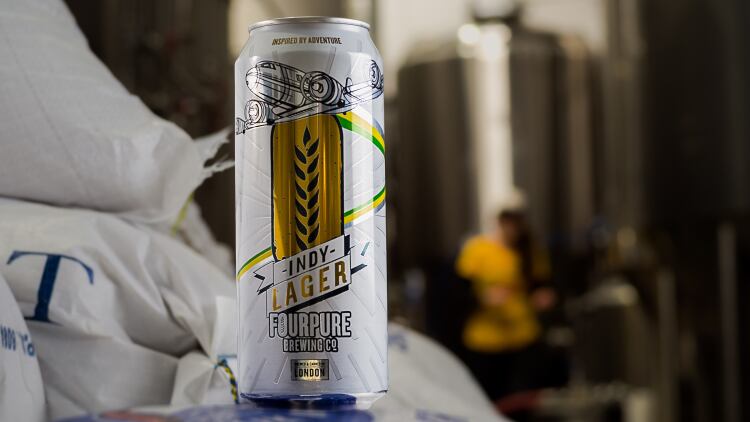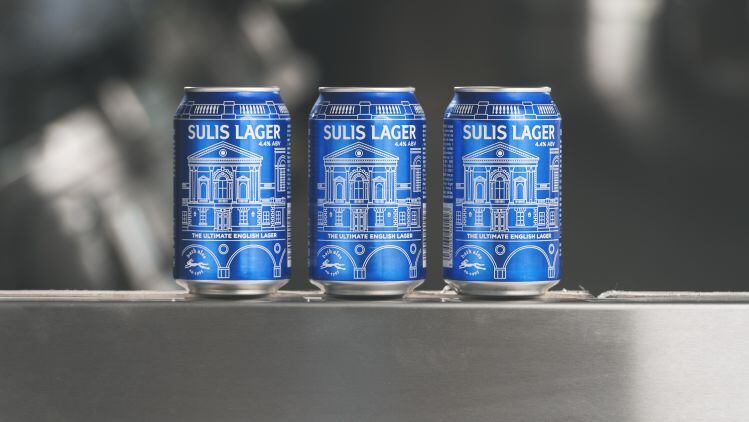On the face of it, it’s not a great time to be a lager producer. Despite the category still accounting for the majority of on-trade sales, with 65% of all beer produced/sold in the UK (according to The Cask Report 2018) being lager, demand for the fizzy yellow substance is in decline.
Mainstream lager sales have dropped by 11% since 2011, and are showing no sign of a significant unturn any time soon. Customers are increasingly staying at home, shown through a 10% dip in the number of on-trade visits, according to new statistics from Heineken. When they do leave the couch, punters are increasingly choosing other drinks in the pub, which leaves mainstream lager, in particular, fighting for its place on the bar.
“Mainstream lagers are still the backbone of beer sales within the on-trade,” says Jerry Shedden, category and trade marketing director at Heineken UK. “However, bigger brands are seeing small declines as outlets look to premiumise ranges and respond to the trend for craft.”
Carlsberg UK vice-president of marketing Liam Newton shares this view. “Consumers are drinking less, but better, with over half of 18 to 34-year-olds claiming to only drink ‘premium’ lager,” he argues. “It is undeniable that premiumisation is a trend continuing to dominate the lager sector.”
Trading up
48%
The top three brands make up almost half of total lager volume
The latest statistics from CGA appear to back these beliefs. While total volume sales of lager are down by 5.6% in the past four years, value in the same period is up 5.5%, showing that customers are increasingly switching to higher value, more premium products.
“Lager volume declines over the past four to five years are driven primarily by the standard lager brands,” explains CGA senior client manager Paul Bolton. “As more premium choices become available to fit a consumer looking for a more premium experience, these brands have suffered the most and as they’re the biggest it drives the whole category down.
“The picture more recently is a lot more positive as growth in premium lager brands in particular has meant volume declines are being curtailed, while value is in growth.
“It is important to note how big standard lager still is – the top three brands make up 48% of total lager volume – but this share has dropped from 56% four years ago, with a number of licensees choosing to scrap the category altogether and start with a more premium brand as their entry-level lager.”
Premiumisation within lager can be broadly split into two main categories. Firstly, global brewers are seeking to push higher-value products to tap into consumers’ willingness to spend more per visit to the pub. Last year, Carlsberg rebranded its Export variant, pushing it to look more of a premium option on the bar, and the beer has seen double-digit growth in the independent free trade.
“Consumers are also increasingly drawn to lagers with a premium look and feel, and those that demonstrate genuine authenticity and heritage,” adds Newton. “This is particularly prevalent in the 18 to 34 age bracket, with 56% of drinkers stating that they like lager brands with a strong heritage or story.”

Local provenance
Secondly, a number of smaller producers are now trying their hand at lager production, encouraged by increased consumer interest in provenance and quality. One such producer is Fourpure Brewing Co, set up in 2013 in Bermondsey, south London.
56%
Of drinkers in the 18-34 age bracket state they like lager brands with a strong heritage or story
“We didn’t launch with a lager but we always planned to have one,” explains the brewery’s founder Daniel Lowe. “The Pils took us the longest to develop and the longest to get right.”
Fourpure launched its Pils Lager in spring 2014, and lager is now about 25% of the brewery’s volume sales, rising to around a third during the summer months. Lowe explains that the widespread adoption of keg packaging and dispense format among smaller producers has been vital in the growth of the craft lager category.
“In Britain, we used to have very much either cask ale brewers or macro lager producers,” he explains. “For a very long time cask ale producers had neither the infrastructure nor the desire to make lager, while the macro brewers didn’t see cask as a scaleable, shelf-stable product they could have in a supply chain, so it wasn’t really relevant to them.
“Modern breweries have adopted the keg format. Now beer doesn’t go on the bar and end up oxidised three days later. It can be longer lasting and remain shelf -stable through a supply chain. Hence that lager market has now been opened up to some of the smaller brewers.”
Despite this, Lowe acknowledges that lager production brings its own set of challenges for smaller producers, which often makes competing with global brewers on price difficult.
“With a craft keg ale environment, a beer may spend two or three weeks in the cellar of the brewery, and then comes out in a condition that is ready to pour,” he says. “In lager, the occupation time in the brewery is more like four to six weeks dependent on the beer, so tank occupation time is doubled. Tanks and space cost money, which limits our ability to produce a product that often has a perceived lower price point by the trade.
Drink less, drink better
80%
Of Camden Town Brewery's production is its Hells lager
One example of a brewery that has successfully broken into the mainstream and found regular slots on bars and in pubs around the UK is Camden Town Brewery. After taking on the challenge of making good lager from the basement of the Horseshoe Pub in Hampstead, north London, back in 2006, founder Jasper Cuppaidge grew Camden Town into one of the largest craft breweries in the UK, before eventually selling the business to AB InBev for £85m in December 2015.
Camden Town’s growth has been built on the strength of its iconic Hells Lager brand, a beer that makes up an enormous 80% of its production today, and the brewery has recently launched a new marketing campaign, Hello Hells, aimed at “reigniting the UK’s love for lager”.
Cuppaidge believes that the growing demand for craft lager is reflective of UK consumers’ demand to drink less, but better.
“Everything has got better, right? Even crisps have got better,” he says. “Only five or so years ago, we were all eating salt and vinegar and now we’re eating all these exotic flavours from Tyrells. People are demanding better and consuming less. I wanted better; that’s why I started Camden.”
On the subject of why craft lager, in particular, has proved so popular with drinkers, and why it is so perfectly suited to the pub, Cuppaidge points towards the beer’s sessionability, and its appeal to a broad range of drinkers.
“Lager is that refreshing type of drink that doesn’t get in the way; it doesn’t get in the way of the conversation,” he says. “When I have a lovely IPA and I’m sat on the sofa and want to savour it then it’s a different occasion. Lager is a sociable beer and that’s why it’s always going to work well in the pub. It’s there to drink and to enjoy.
“One of the great things about lager is that people already understand what it tastes like, and when you give them a great one, they will just recognise that it’s great,” Cuppaidge continues. “With other styles like sours, you can’t just leave the customer to it; you have to explain it to them. For the lager lover to try craft, it’s a very easy segue.
“Our general consumers at the brewery tap are mostly people that used to drink Foster’s and now come in here and realise that for a little bit more money they can have better.”
The growth of premium lager is such that even more traditional regional and family brewers are now getting in on the act. Bath Ales has released Sulis, a 4.2% ABV premium English lager, to coincide with the opening of its new brewery this month. The beer is brewed with Lemon Drop and Hüll Melon hops, and takes its design cues from the brewery’s location and heritage.
“Sulis is a premium beer brewed to compete with the authentic, high-quality European style lagers, but is distinctly West Country to fit in with our heritage and to help create stand-out from the continental beers it competes against,” explains Bath Ales brewing director Roger Ryman.
“Within the premium lager market, brand credentials and brewing location continue to lead the way, and there’s a very strong link between premium and provenance. We are positioning Sulis as the ultimate English lager, which is brought to life by the classical Bath architecture that decorates our new font and beer glass.”

Lager sub-styles
With lager commanding such a large percentage of the overall beer market, and interest in new and interesting products booming, Lowe believes pubs ought to further break down their lager options in a bid to further drive interest in the category and grow sales.
50%+
Of 18-34 year olds claim to only drink 'premium' lager
“We talk about lager as if it is one style of beer, but we don’t just say ale,” he explains. “We say IPA, pale ale, sour, porter. We break that category down, and if we start to use words like Helles and Pilsner to break lager down into the range of different beers which exist within that category, this will show people there is actually diversity within the line-up the licensee is offering.”
“Too many times I see menus where the pub will put IPAs, stouts, porters, etc, all separately and then have just lagers. By just blocking the whole category under the label of lager we are assuming the customer is not interested in finding out more.”
“I’d also like to see us using different descriptors to show people that lager can be fruity, it can be citrusy, it can be a whole range of things. Let’s stop saying ‘these are my lagers, they are all crisp and dry and refreshing’ and start saying ‘this is my Pilsner, this is my Helles, this is my Märzen’.”
Beer and travel writer Mark Dredge, who is currently researching a new book on the subject of lager, shares this view. “The way for pubs to increase lager sales is to offer a better, more premium selection,” he says. “But it still needs to be familiar-tasting lager – basically more interesting versions of the lagers that everyone is already drinking.”
Looking to the future, the consensus seems to be that current trends within lager will continue. “We are probably going to continue to see structural decline in overall lager in the marketplace,” admits Lowe. “The volume that people are drinking is reducing. However, I do think if you look at value, you would see the percentage contributed by lager is stable if not increasing because there is an increasing interest in lager from the craft sector.”
Cuppaidge agrees, but is less concerned about lager losing market share, and more worried about beer volumes declining as a whole.
“Lager will always be a great part of the industry but IPAs and other styles will become a bigger share,” he says. “My concern is not about how much of a percentage lager makes up of the overall beer market, but that beer consumption and sales continue to fall.
“We need to stop worrying about styles within styles. What we have to worry about is wine taking more share of throat, or gin knocking us for six like it is at the moment.”
So, while there are undoubtedly challenges for both lager producers and those who sell it in the on-trade, the continuing growth of premium and craft options suggests the picture may not be as bleak as it appears on the surface.
